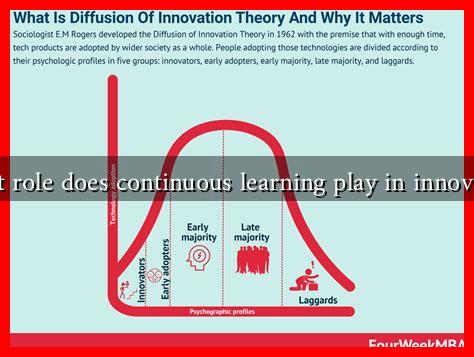-
Table of Contents
- What Role Does Continuous Learning Play in Innovation?
- The Importance of Continuous Learning
- How Continuous Learning Drives Innovation
- 1. Knowledge Acquisition
- 2. Encouraging Experimentation
- 3. Building a Learning Organization
- Case Studies: Continuous Learning in Action
- Statistics Supporting Continuous Learning and Innovation
- Conclusion
What Role Does Continuous Learning Play in Innovation?
In today’s fast-paced world, the ability to innovate is crucial for organizations seeking to maintain a competitive edge. Continuous learning has emerged as a vital component in fostering innovation, enabling individuals and organizations to adapt, grow, and thrive in an ever-changing landscape. This article explores the relationship between continuous learning and innovation, highlighting its significance, benefits, and real-world applications.
The Importance of Continuous Learning
Continuous learning refers to the ongoing, voluntary, and self-motivated pursuit of knowledge for personal or professional development. It encompasses various forms of learning, including formal education, online courses, workshops, and experiential learning. The importance of continuous learning in the context of innovation can be summarized as follows:
- Adaptability: In a rapidly changing environment, continuous learning equips individuals with the skills and knowledge necessary to adapt to new technologies and market demands.
- Creativity: Exposure to new ideas and perspectives fosters creativity, which is essential for generating innovative solutions.
- Collaboration: Continuous learning encourages collaboration among team members, leading to diverse viewpoints and enhanced problem-solving capabilities.
- Resilience: A culture of continuous learning helps organizations build resilience, enabling them to navigate challenges and seize opportunities.
How Continuous Learning Drives Innovation
Continuous learning plays a pivotal role in driving innovation through several mechanisms:
1. Knowledge Acquisition
Organizations that prioritize continuous learning create an environment where employees are encouraged to acquire new knowledge. This knowledge can lead to:
- Improved processes and efficiencies.
- Development of new products and services.
- Enhanced customer experiences.
For instance, Google’s “20% time” policy allows employees to spend 20% of their workweek on projects they are passionate about, leading to innovations like Gmail and Google News.
2. Encouraging Experimentation
Continuous learning fosters a culture of experimentation, where employees feel safe to test new ideas without the fear of failure. This culture can lead to:
- Rapid prototyping of ideas.
- Iterative improvements based on feedback.
- Breakthrough innovations that may not have been possible in a risk-averse environment.
For example, Amazon’s approach to innovation emphasizes experimentation, allowing teams to launch new products quickly and learn from customer feedback.
3. Building a Learning Organization
Organizations that embrace continuous learning often evolve into learning organizations, characterized by:
- A commitment to knowledge sharing.
- Investment in employee development.
- A focus on long-term growth and sustainability.
Companies like Toyota exemplify this approach through their commitment to the Toyota Production System, which emphasizes continuous improvement and learning at all levels.
Case Studies: Continuous Learning in Action
Several organizations have successfully integrated continuous learning into their innovation strategies:
- IBM: IBM has invested heavily in employee training programs, including the IBM Skills Academy, which focuses on emerging technologies. This commitment has led to innovations in AI and cloud computing.
- Netflix: Netflix promotes a culture of freedom and responsibility, encouraging employees to learn continuously. This approach has resulted in innovative content delivery and a unique business model.
Statistics Supporting Continuous Learning and Innovation
Research supports the link between continuous learning and innovation:
- A study by the World Economic Forum found that 94% of employees would stay at a company longer if it invested in their learning and development.
- According to LinkedIn’s 2021 Workplace Learning Report, organizations that prioritize employee learning are 92% more likely to innovate.
Conclusion
Continuous learning is not just a buzzword; it is a fundamental driver of innovation in today’s dynamic business environment. By fostering a culture of continuous learning, organizations can enhance adaptability, creativity, and collaboration among their workforce. The examples of companies like Google, Amazon, and IBM illustrate how investing in continuous learning can lead to groundbreaking innovations and sustained competitive advantage. As the landscape of work continues to evolve, embracing continuous learning will be essential for organizations aiming to thrive in the future.
For more insights on continuous learning and its impact on innovation, you can explore resources from the World Economic Forum and LinkedIn Learning.

